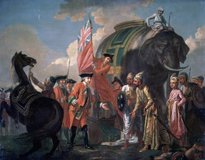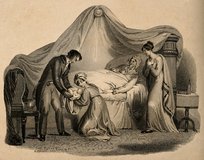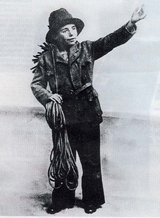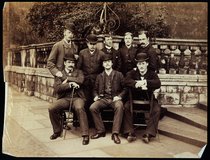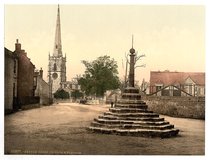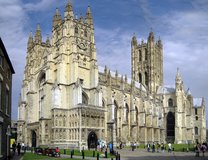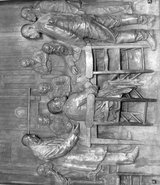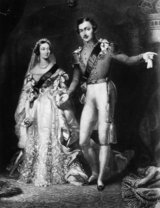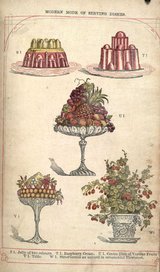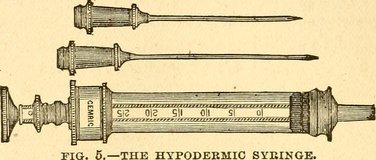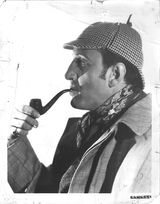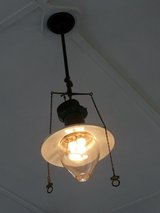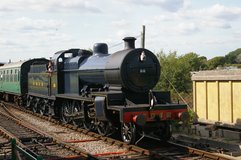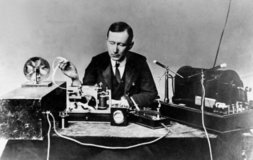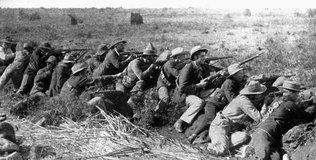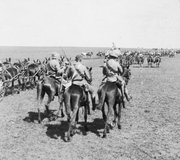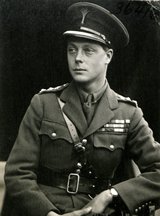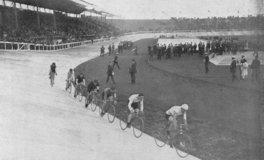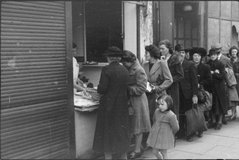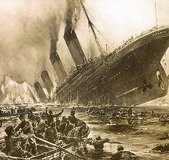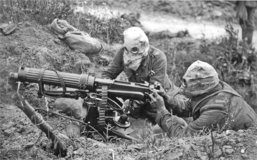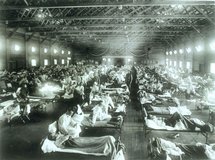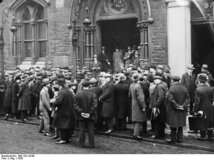©2025 HistoryLines, 2270 US Highway 30, Oswego, IL 60543.
Nathaniel Nixon
-
Childbirth
-
Childhood
-
Clothing
-
Commerce
-
Communication
-
Diet
-
Education
-
Entertainment
-
Holidays
-
Household
-
Hygiene
-
Marriage
-
Medicine
-
Military
-
Politics
-
Religion
-
Transportation
-
Nathaniel is born in Sunderland, Durham, England
-
India was placed under British rule in 1858.
-
Education Act is passed by Parliament.
-
Boer colonists fight the British military for control of farm land and resources
-
Sir Arthur Conan Doyle writes first Sherlock Holmes book, A Study in Scarlet.
-
Mysterious murders captivate England
-
Guglielmo Marconi invents radio
-
The Boer War is fought between the British and the Boers of South Africa
-
Over 2,000 athletes compete in the massively successful London Olympic games.
-
The National Insurance Act provides peace of mind to British citizens
-
The RMS Titanic sinks after hitting an iceberg in the north Atlantic Ocean
-
English citizens live in fear of Zepplin air raids and biological warfare during The Great War
-
Spanish Flu devastates the United Kingdom
-
Unemployment reaches a post-war high of 2.5 million.
-
Nathaniel dies at age 57.
As scientific understanding increased, the traditional midwife was in some cases banished and replaced with an academically-trained doctor—particularly in progressive urban areas. Armed with innovations such as forceps and more efficient and comfortable birthing chairs, medical professionals eased stress on the mother. However, a lack of sanitation and anesthesia still made birth a painful, dangerous endeavor. While the mortality rate for children remained high—ranging from ten to thirty percent depending on the location—the innovations in technology paved the way for better tools and anesthetics, ensuring safer procedures for Nathaniel's descendants.
Work was often divided by gender roles, with girls learning basic cooking, cleaning, and other duties to help run a home, while boys helped harvest crops, hunt, and learn a trade. In some cases, corporal punishment was now seen as a last resort for parents, and they often used other methods of discipline such as denying food, limiting time with friends, or even embarrassing them in front of peers or family members.
When children were fortunate enough to have free time from both school and work, there were a number of popular toys and games to choose from, including tops, jacks, cards, charades, checkers, chess, and badminton. Wealthier boys and girls often played with intricate doll houses, clockwork toys, wooden animals, or collected tin soldiers.
Boys of Nathaniel's time learned subjects such as technology, woodwork, and math, while girls learned cooking, sewing, and skills for motherhood. At school, students were kept in line with the threat of physical beatings.
Working-class boys around Nathaniel rarely attended school for more than three years because of the fees charged and the productivity missed by not plying a trade or working in a factory. One-third of children never attended school at all, and many never learned to read and write. Instead, they learned how to function on a farm or run a household.
Apprenticeships were a popular option for many young men in Nathaniel's community, as it allowed them to learn a particular trade or profession without adding to the financial strain of a family. Apprentices could start as young as 12 and received board, food, and clothing from their master.
Wealthier students, including girls, could possibly attain an education abroad or be taught at home by governesses. Young men could further their education within England at world-famous institutions like the Eton Preparatory School, Cambridge University, or Oxford University.
The day after Christmas, known as Boxing Day, had its own set of activities. On this day, servants in Nathaniel's community received a Christmas box from their employer as thanks for the good service throughout the year. Another uniquely English holiday was St. George's Day, on April 23rd, as people across the country celebrated the saint's heroic slaying of a dragon by hanging flags and singing the hymn Jerusalem.
Every November 5th, Nathaniel's family observed Bonfire Night (today known as Guy Fawkes Day), celebrating the failure of Fawkes's plot to assassinate King James I in the early 17th century. Fireworks and bonfires illuminated the night sky, and celebrants built effigies complete with masks resembling the face of the very distinctive-looking Fawkes.
In 1871, England added bank holidays: four days of rest that coincided with the day after Easter; the first Monday in May; the first Monday of August; and Boxing Day. As immigration increased over time, the non-Christian population of England brought its own traditions, including Jewish holidays like Yom Kippur and the Muslim fasting season of Ramadan.
In the early 1800s, a lot of sewage was emptied into the Thames, culminating in "The Great Stink" of 1858, when the smell was so bad that the wealthy walked around London holding perfume-soaked hankies to their nose, fearing that the "bad air" would make them ill otherwise. Fortunately, by the end of the century, waste removal had improved and this practice was no longer necessary. Better plumbing and water heaters gradually revolutionized how people lived, as well, as regular bathing and the use of commercial soaps and cosmetics increased among Nathaniel's friends and neighbors. Even as conditions improved, however, the high cost of housing in many English towns meant that many working-class people had to live in cramped quarters, facilitating the spread of diseases such as tuberculosis and diphtheria.
Oral hygiene started receiving more attention during Nathaniel's life, as coarse, boar-hair toothbrushes were being manufactured and sold. Brushing one's teeth was still seen as more of a luxury in many homes, however. In terms of feminine hygiene, women around Nathaniel continued to use cotton cloths until manufactured cloth pads were made available in the mid-1800s. Baby diapers, or nappies, were also made from cloth and often cleaned and re-used repeatedly, sometimes leading to severe diaper rash.
For the men in Nathaniel's town, silk vests (or waistcoats) and bow ties were often paired with a knee-length frock coat and patterned trousers with suspenders. Top hats were also very common through much of Nathaniel's life. Men's clothing included disposable cuffs and collars, which no longer needing laundering. Men not in the wealthier class wore more work-oriented clothing, including linen or wool shirts. They donned sack coats (long, with large sleeves) and trousers. Leather shoes or boots were worn, and those who worked in dirtier jobs, such as farming or mining, were known to tuck their trousers into their boots.
A great number of Nathaniel's friends and neighbors of every class habitually attended houses of worship and read their holy books. In England's early history, members of nonconformist religions suffered under the government's swinging pendulum, their rights only sometimes protected. For the non-Anglican religions in Nathaniel's community, though, the government increasingly allowed them to practice as they wished without any repercussions.
During this time, the Church of England dealt with a great many pressures, both from within and outside its community, to reform its ways. People were mainly concerned with corruption and favoritism within the ranks, which occasionally manifested itself with riots in rural areas.
During the ceremony, the bride wore a gown made of muslin, calico, or silk (for the wealthy), while the groom wore his best clothes, including boots and a cloak. Prior to the wedding of Queen Victoria in 1840, any bride Nathaniel saw likely wore pinks and purples, with a corset and crinoline in pastel colors. After 1840, however, women all over the country followed the Queen's lead and started wearing white. Women also carried a bouquet of flowers and decorated their hair or dress with more blooms. The majority of ceremonies were held in churches.
Society continued to uphold traditional family roles during Victorian times, with the mother raising the children and keeping an orderly home, while the father worked and provided for the family. Many families around Nathaniel raised five or six children. Although it was expensive, divorce was possible, with men able to divorce much more easily than women.
The traditional "afternoon tea" was introduced to England in 1840 by Anna, Duchess of Bedford. The duchess often had mid-afternoon meals of tea, bread and butter, and would invite her friends to join her. From there, the event became fanciful. Wealthy women in the 1880s would wear gowns, gloves and hats to attend tea even at home, and served dainty sandwiches, scones, and pastries.
England was also famous for its English puddings. A common type of pudding was trifle, made from layers of custard, whipped cream, sponge cake, jelly, and fruit. One that was especially popular with children was the "jam roly-poly," a suet (mutton or beef fat) pudding made with jam that was rolled up and then steamed.
Doctors also developed new ways to improve their patients' comfort, and laughing gas, codeine, chloroform, and morphine decreased pain during operations. Other simple painkillers such as salicylic acid, the forerunner of aspirin, were made into pills and powders for easy consumption. This development allowed many members of Nathaniel's community access to inexpensive medication for even minor aches and pains. Others elected to purchase homeopathic "natural cure" pills and solutions not supported by traditional medicine. These products, then known mostly as patent medicine or "quackery," were sold equally by con men and legitimate pharmacies, and were popping up everywhere, delivering very mixed and controversial results.
England still suffered from industrial related illnesses such as "phossy jaw," a disease caused in miners with exposure to phosphorous. Occupations such as railroad work, especially for those who worked in the yards, were usually dangerous and often deadly.
As far back as the Middle Ages, English soldiers wore red for the color of St. George's Cross, which was a well-known English symbol. British foot soldiers and grenadiers (designated grenade-throwers) wore coatees (a waist-length jacket with short tails behind). Yeomen (originally light cavalry) wore red and gold uniforms, and the regular cavalry also wore high riding boots. Other units and divisions wore variants of the black, red, and gold uniforms. The Royal Navy, however, had no standard uniform from ship to ship for sailors, and each vessel issued clothing that comprised a uniform to its own sailors. The officers wore blue jackets and white waistcoats, wearing stripes on their sleeves to indicate rank.
After 1866, soldiers carried Snider-Enfield rifles, which were loaded at the breech (the area between the handle and the muzzle), making them faster and more accurate than muzzle-loading weapons. As needed, battle techniques changed, and soldiers adopted the American Civil War tactic of "digging in," or making earthworks or wooden breastworks to provide cover while fighting, rather than advancing in the open in straight lines.
Wealthier people could spend their free time playing chess and backgammon or fox hunting, fishing, and yachting. Others vacationed in Bath and Buxton to enjoy the health benefits of the areas' natural mineral waters. Bicycle clubs began appearing across the country, allowing Englishmen who could afford bicycles to get exercise while socializing. Indoor games were also popular, and many of Nathaniel's wealthier neighbors played a Parcheesi-like game called ludo.
Working-class entertainment often centered on less expensive activities. People in rural areas occasionally enjoyed performances by traveling groups of actors and musicians. Nathaniel's relatives also enjoyed playing and watching football, cricket, and boxing, which had only recently become organized sports. Rules were drawn up and matches arranged between British national clubs and foreign teams.
The wealthy usually had large homes with very cramped quarters for their servants. Newer, large-scale homes were typically built in the Art Nouveau style. By the late 19th century, houses with distinctively "Victorian" features such as turrets, asymmetrical floorplans, and elaborate ornamentation in brick, stone, or plaster had also become popular in Nathaniel's neighborhood. Both the wealthy and middle class could now purchase mass-produced furniture, and straw mattresses were often replaced by comfortable feather beds. By the end of the century, indoor plumbing and running water improved the daily routines of many members of Nathaniel's community.
Such household improvements came more slowly to Nathaniel's working-class neighbors, however. Outhouses and chamber pots had to be sufficient where running water was unavailable. The poor generally lived in tightly aligned "terraced" or "row" houses, with two downstairs and two upstairs rooms, with the downstairs back room serving as the kitchen. After 1875, new regulations required these houses to include more windows and square footage, improving home life for much of the working class.
Nathaniel generally traveled most places on foot, although horses, buggies, and wagons were widely used for lengthier excursions. As horses were expensive, many traveled by oxen, which had been available long before; although they were slow, they were very powerful. A bicycle craze captured much of Europe in the mid to late 1800s, reducing the reliance on horses or oxen and offering quick, affordable transport to the masses.
Perhaps even more impactful than the railroad was the development of an early internal combustion engine in the 1850s, which was eventually used in the first automobiles and new, faster ships. Additionally, in 1885, the induction motor was invented by Galileo Ferraris; Nikola Tesla also designed one, unaware of Ferraris' invention. This motor, also known as an alternating current motor, was used in every application where such a piece could be required. The world was changing all around Nathaniel, and speeding up as well.
Even after his initial successes, Marconi continued to study and develop his science, assisting in the creation of the British Broadcasting Company (BBC) and the development of radar technology. But Marconi would remain most well-known for inventing the radio, bringing increased enjoyment, safety, and information to Nathaniel's neighbors and relatives. Many members of Nathaniel's community soon could not imagine their lives without the existence of radio.
Low-tech forms of communication also grew during the first half of the 20th century. Newspapers like the News of the World and the Sunday Mirror saw their subscription rates grow from around 3.5 million readers in 1935, to 7 million in the years after World War II. Writing letters was still as popular as ever. People could use new, efficient typewriters, along with traditional pen and ink, to correspond with friends and family across the country. Air mail was introduced in 1919, which used new airplane technology to deliver mail faster and farther. Although it took time, the library system also grew in the 20th century. For literate people in Nathaniel's country, the wider availability of books and magazines offered a connection to the wider world and opened up imaginations.
After wars and rebellions, Parliament gradually emerged as the dominant political force in England, with the monarchy shifting more into figurehead status. Parliament was the British body of lawmakers, similar to Congress in the United States; instead of the House and Senate, they had the House of Commons and House of Lords. The three parties dominant in Nathaniel's lifetime were Labour, Conservative, and Liberal. The Labour Party had interests in protecting the average worker from employer abuses and breaking up monopolies, while the Conservative Party believed giving large tax breaks would stimulate the economy. The Liberal Party was more progressive than Labour and sought social reforms, such as the ending of conscription.
Shifts occurred in both the royal family and political leadership, as King Edward VIII abdicated his throne to marry a divorced American woman in 1936. After falling in and out of favor with both the public and other politicians, Winston Churchill became prime minister following the resignation of Neville Chamberlain, who stepped down after failing to deal properly with Adolf Hitler and the Nazi threat, ultimately leading the nation to victory.
In the early 1900s, many people like Nathaniel still bought goods at small, independently owned stores that sold particular household items, but the era of the department store had also arrived in many larger towns, allowing customers to purchase a wide variety of products under one roof. Some of the more famous department stores were Harrod's, an upscale store that had been around since 1832, and Marks and Spencer, which had sold clothing and home products since 1884. Other department stores served particular areas, such as Atkinsons, a family-owned and run department store in Sheffield.
The British economy slowed with the worldwide depression during the 1930s, but it recovered during the second World War when new industries, such as automobiles and aeronautics, provided jobs. Despite the commerce boom England received in the 1940s, there was still austerity (rationing) in place to preserve materials and food for soldiers in the war. This meant that people tried to make the most of every item they got and reused what they could.
Back home, women filled men's jobs after they left for war. Threats of attack terrified Nathaniel's community, who worried about the potential of a Zeppelin air raid. Some of Nathaniel's neighbors even heard bombs and gunshots echoing across the English channel.



